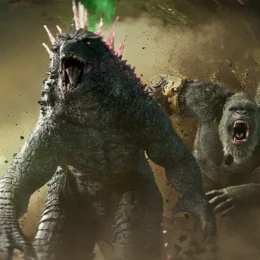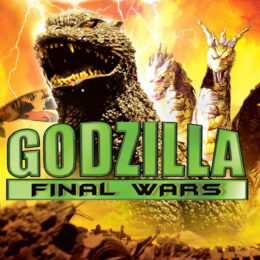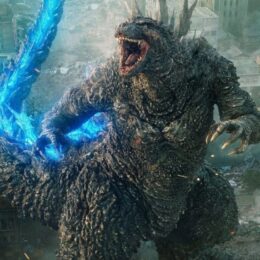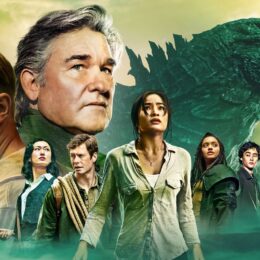GODZILLA. The Birth of a Pop Culture Icon
Deeply hidden within each of us is a need for destruction. Although the social norms that bind our hands do not allow us to disrupt the order surrounding us, observing the behavior of a young child playing with building blocks reveals that, just as we enjoy creating, we also enjoy destroying. This is where cinema with images of all kinds of disasters comes into play. Their unapologetic and uninhibited observation provides the audience with a unique feeling – it relieves tension and tames fear.
Godzilla, a giant with the appearance of a prehistoric reptile, is a master of destruction like few others. He has sunk countless ships and demolished numerous buildings. His rampage of destruction continues to this day, with films featuring him being continuously produced. Not without reason, he has been hailed as the most famous monster in the history of cinema, his fame even sealed with a star on the Hollywood Walk of Fame. Godzilla is a pop culture phenomenon, built upon a foundation of dozens of films and a slightly smaller yet equally impressive base of books, television series, computer games, and comics. However, every legend has its origin. To better understand the gigantic lizard, we would have to go back to 1954, when the first film in the series was created.
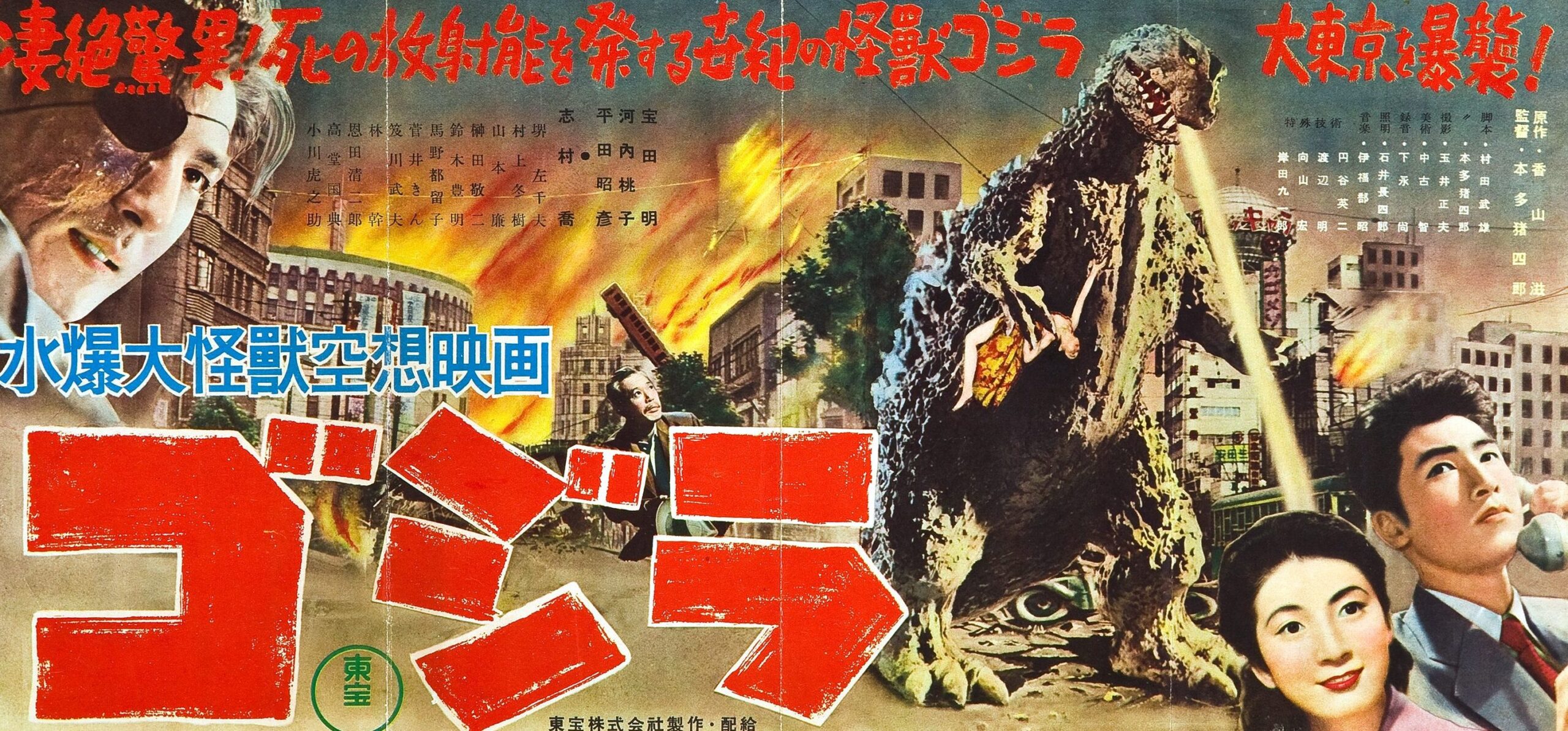
Ishirô Honda and Eiji Tsuburaya. This duo of creators was responsible for bringing Godzilla to life. Of course, we’re talking about the director and the special effects expert. The first had the idea, and the second knew how to visually demonstrate it. Their collaboration produced a spectacular result. Honda, a graduate of the Academy of Fine Arts, collaborated with Akira Kurosawa in the early stages of his film career, learning the craft from him. Until Godzilla was created, the Western world associated Japanese cinema mainly with Kurosawa’s films. Honda changed that by making Godzilla the most expensive film in the history of Japanese cinema at the time of its production, and thanks to its success, the most recognizable creature in Japanese popular culture worldwide. Interestingly, the inspiration came from the Western world.
Related:
The Beast from 20,000 Fathoms, a 1953 film, so impressed Japanese producers from the renowned Toho studio that they decided to adapt its ideas in their own way. They hired a science fiction writer, Shigeru Kayama, to create a story that would serve as the basis for the script. Honda and Takeo Murata soon took on the task of writing it. The monster’s name, “Gojira,” is a combination of the Japanese words for gorilla and whale, signifying a gorilla-whale hybrid. Originally, the monster was intended to resemble modern animals more and its destructive urge was supposed to be driven by the search for food (and… virgins). According to another plan, it was meant to be a giant octopus. Ultimately, following the concept of The Beast from 20,000 Fathoms, they decided on a prehistoric reptile, whose appearance is the result of merging three dinosaurs – Tyrannosaurus, Iguanodon, and Stegosaurus – into one body.

The special effects turned the concept into reality. While stop-motion animation was more popular in Hollywood (as seen in King Kong, for example), no one in Japan was proficient enough in it to utilize its capabilities. Therefore, Tsuburaya used the suitmation technique to bring the monster to life, which involved dressing an actor in a costume (incidentally, it’s said that it was so hot inside the Godzilla suit that the actor wearing it once fainted). Furthermore, to this day, the incredibly realistic effect comes from the miniature sets that were created for the monster to spectacularly destroy. Of course, Godzilla’s roar, arguably the most characteristic sound effect in the film, was the cherry on top. Although it might seem that it was created by mixing the voices of various animals, the well-guarded truth turned out to be much more prosaic over the years – the piercing roar is nothing more than a resin-soaked glove rubbed against double bass strings.
A funny anecdote is associated with the making of the film. Godzilla was the first Japanese film to be completely planned out in a storyboard. Allegedly, the Honda and Tsuburaya duo wanted to prepare the scene of Godzilla’s march through the streets of Tokyo so well that they decided to have their discussions about it in real conditions, outdoors, amidst Tokyo’s skyscrapers. When their conversation, in which they discussed plans to destroy the buildings in the vicinity, was overheard, their words were taken too literally. This led them to encounter the police and provide the necessary explanations… Fortunately, their work did not go to waste. Destruction, with its unique aesthetics that can engulf the viewer completely, became Godzilla’s signature.
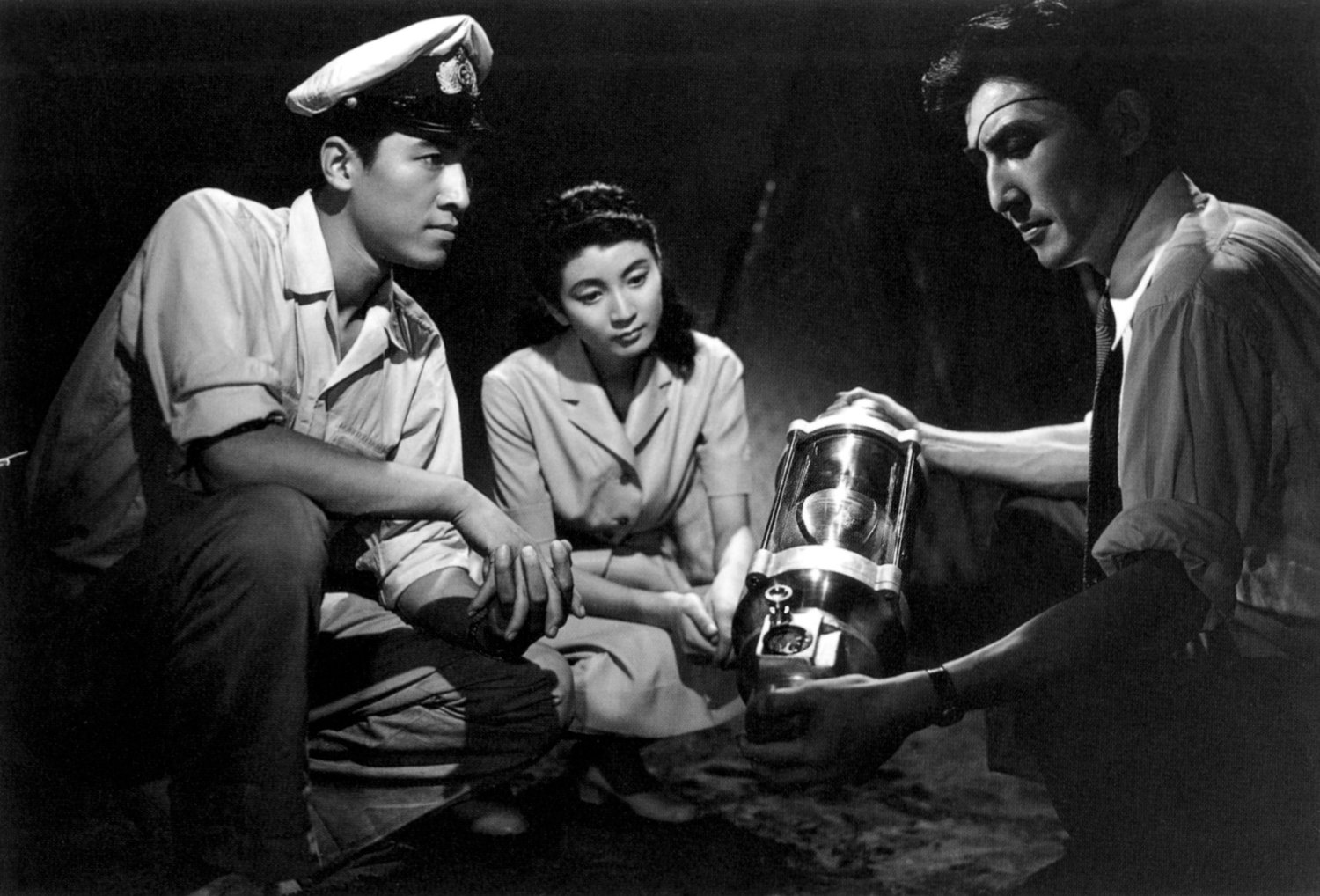
The story of the giant monster was primarily created to serve as a warning. As we know, Godzilla awakens from the depths of the sea due to atomic tests. This is intended as a clear reference to the tragedy Japan experienced as a result of the atomic bombings of Hiroshima and Nagasaki, which occurred just ten years earlier. Godzilla is nothing more than a reflection of the fears and concerns of the Japanese people, including the director himself, who vividly remembered the image of a destroyed Tokyo. The monster symbolizing the relentless march of war is a warning message sent to the world, indicating the great threat posed to humanity by past and potential future acts of war, including the post-World War II atomic confrontations and power struggles. In its tone, Godzilla also functions as a remedy (the monster dies in the 1954 film), providing the audience with a soothing sense of containment and neutralization of evil.
What sets the original Godzilla apart from its legacy is its tone. Ishirô Honda took the story of the giant monster extremely seriously, giving it a realistic character. An interesting element of the drama is the character of the scientist who discovers a new type of weapon capable of defeating the monster. His moral dilemmas make the story credible, as they make it clear how thin the line is between an invention that benefits civilization and one that can lead to its downfall. The characteristic, faint background sound of a drum, announcing the monster’s arrival, helps to create a lasting and mesmerizing tension, emphasizing the penetrating atmosphere of horror. An atmosphere that was so difficult to instill in the subsequent, colorful productions of the prominent series.

In 1956, a modified version of the original film was released in the American market. Scenes featuring American actor Raymond Burr were incorporated into Honda’s footage. This move was intended to make it easier for Western viewers to connect with the story. Although the result was somewhat disjointed, one thing remained. The addition to the title – “King of the Monsters” – became a moniker that accurately describes the famous giant to this day. It is difficult to imagine any other monster dethroning Godzilla from his well-deserved throne.


